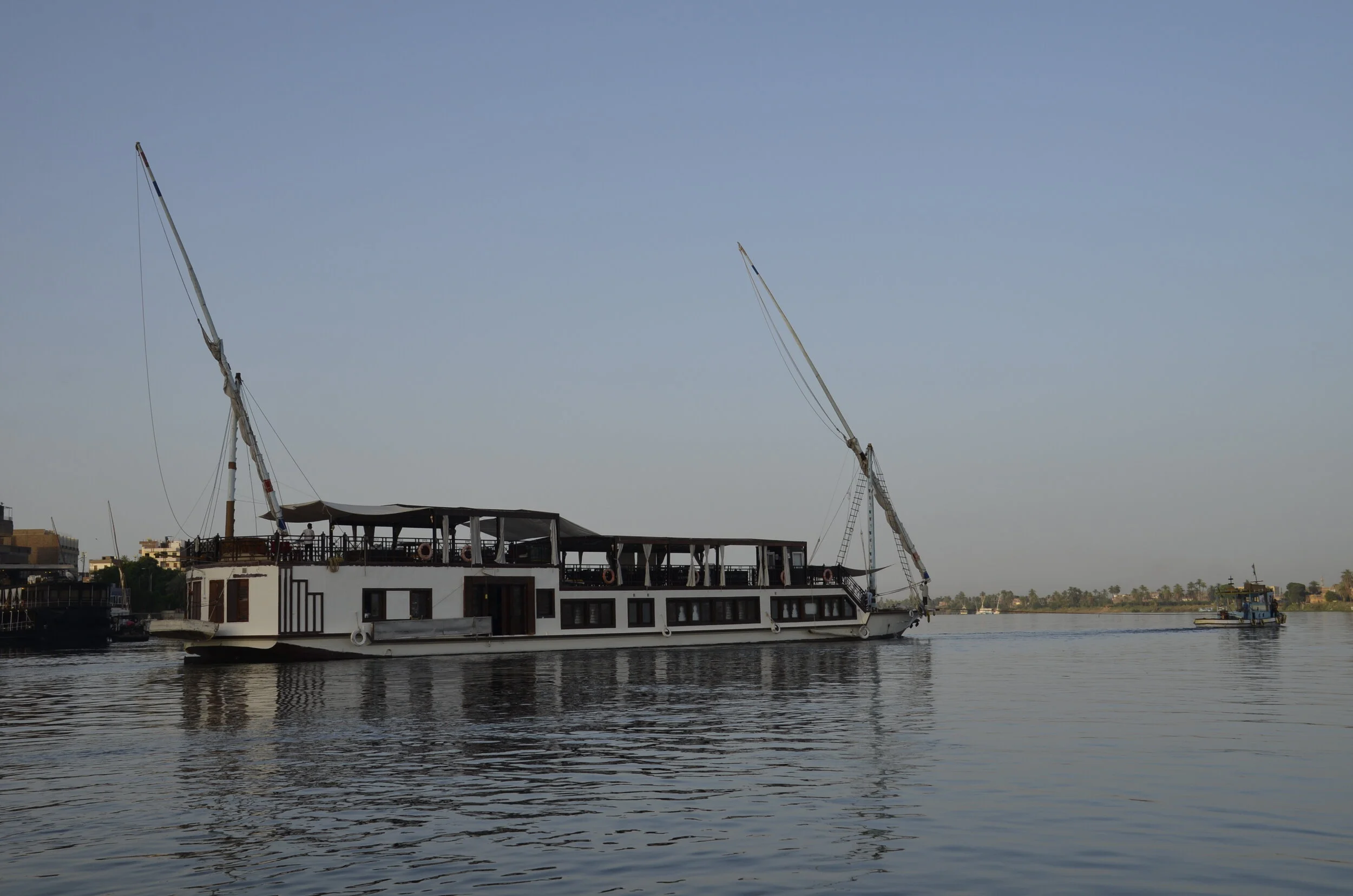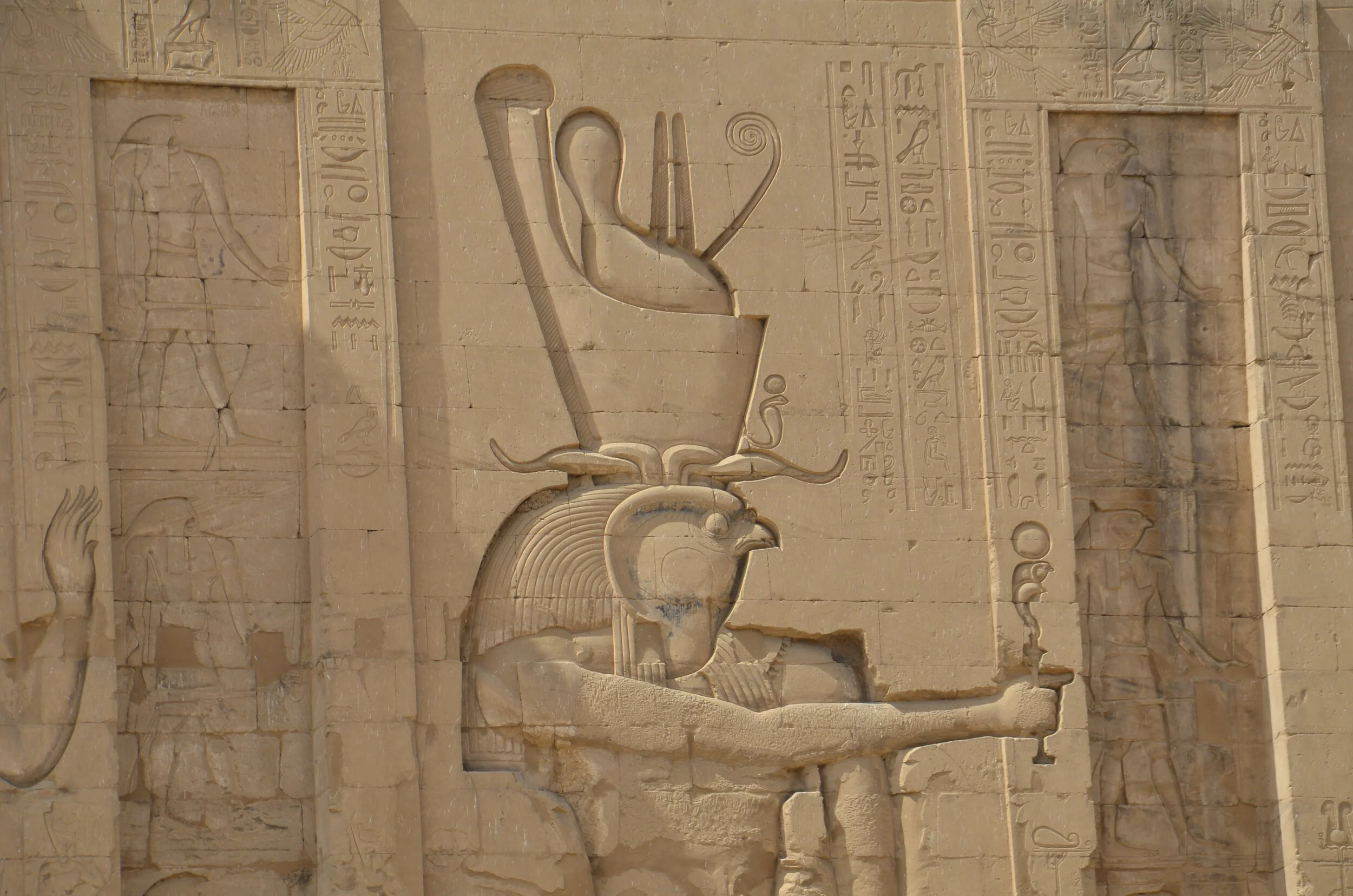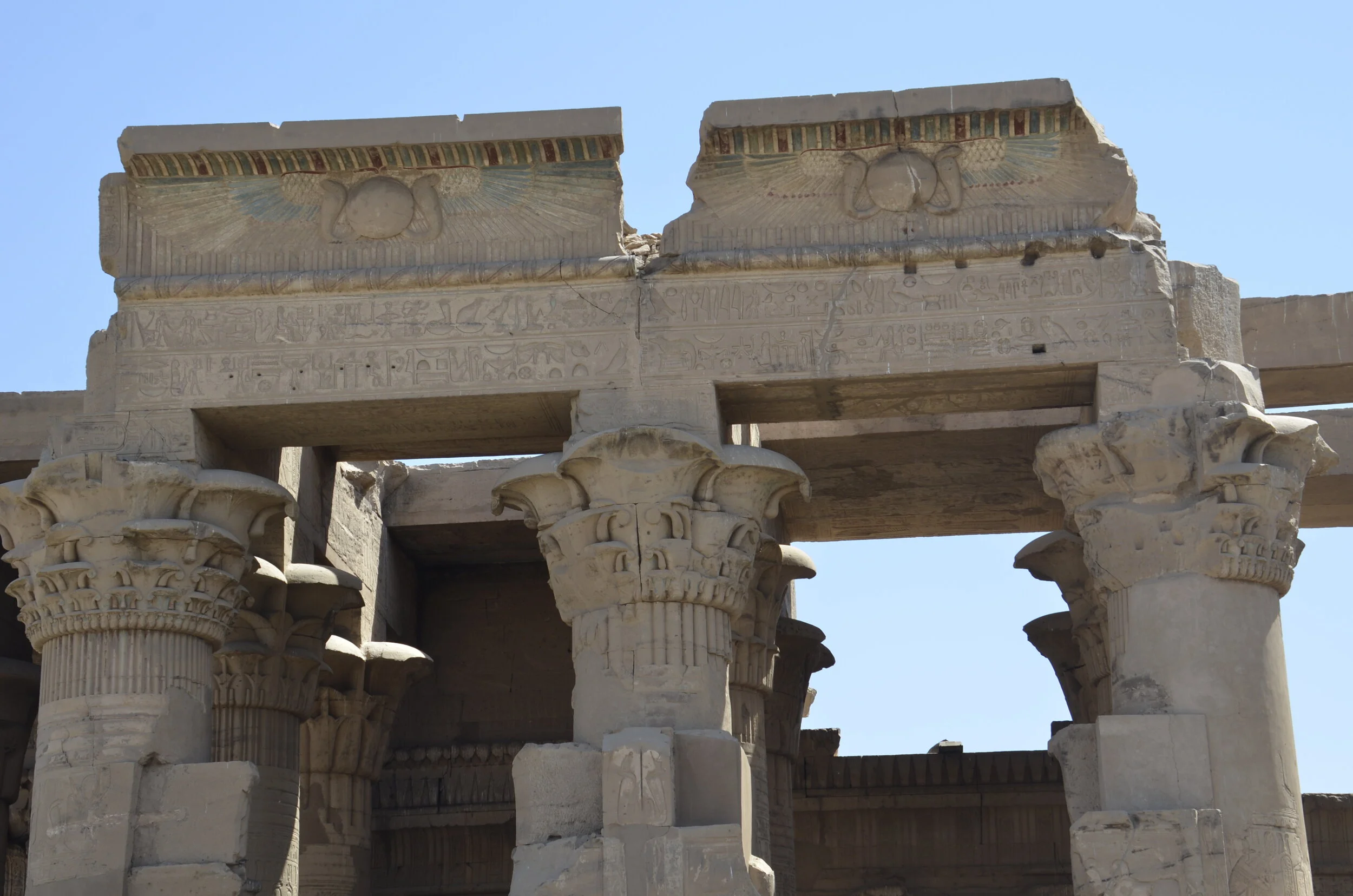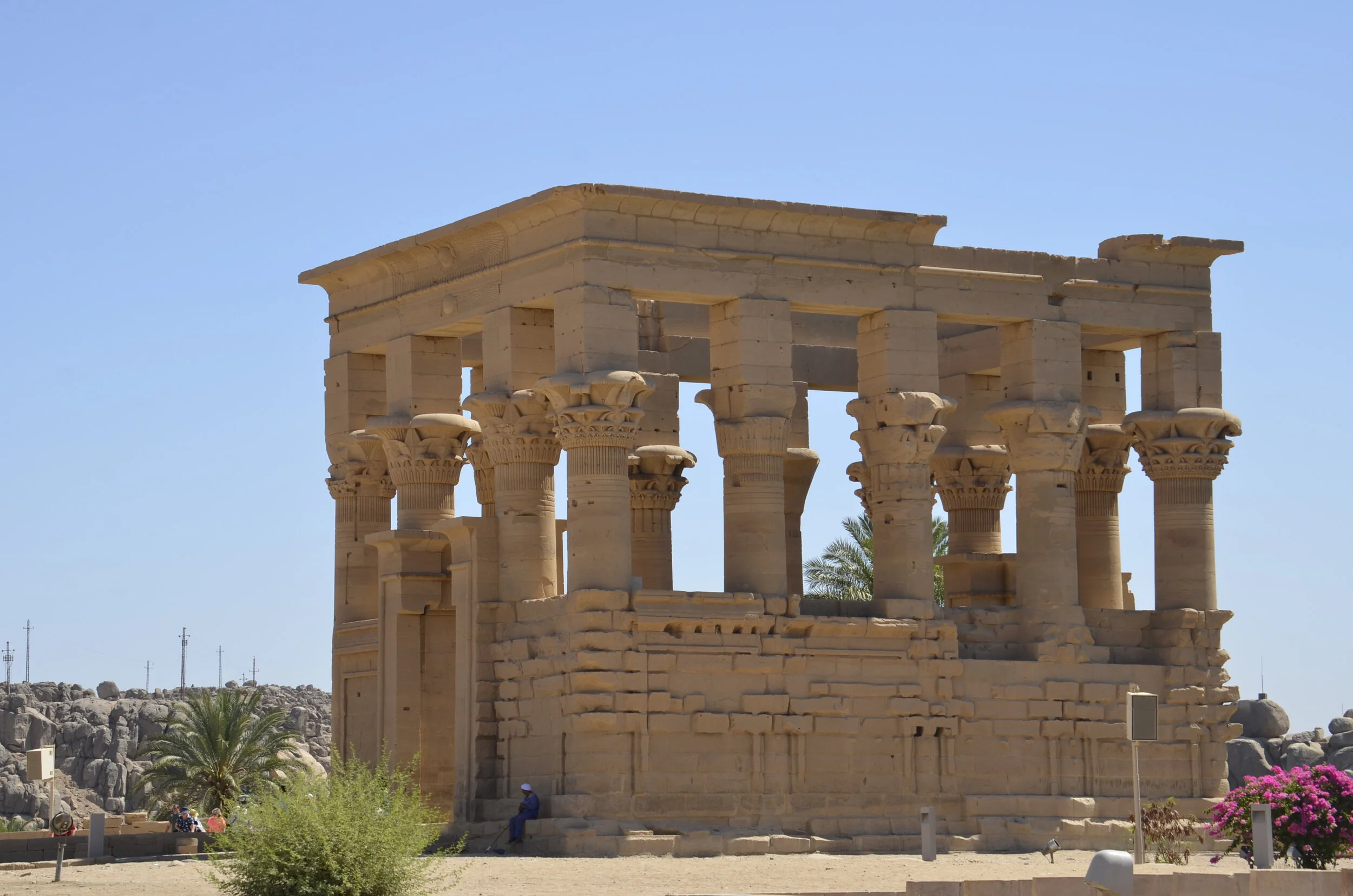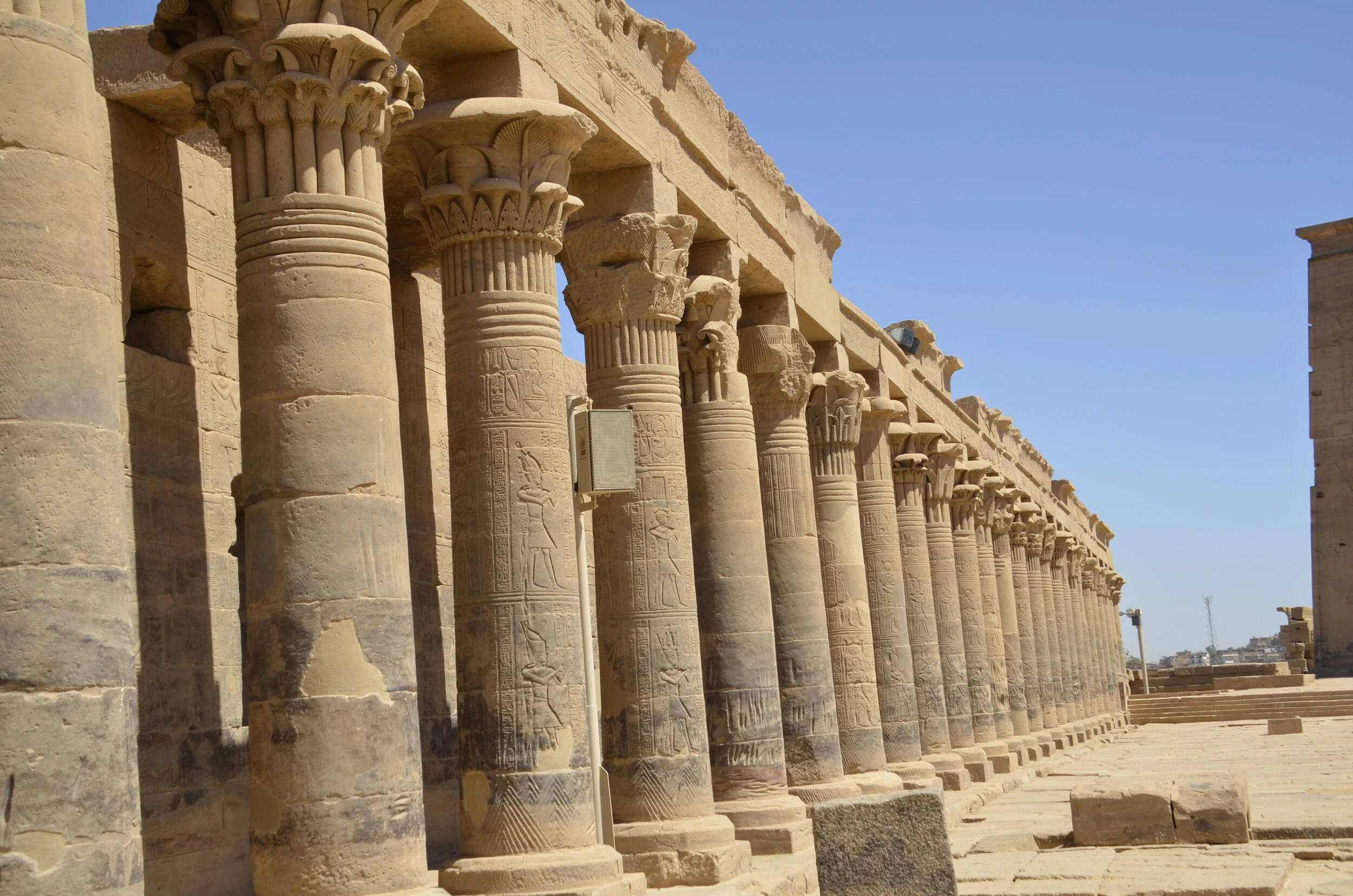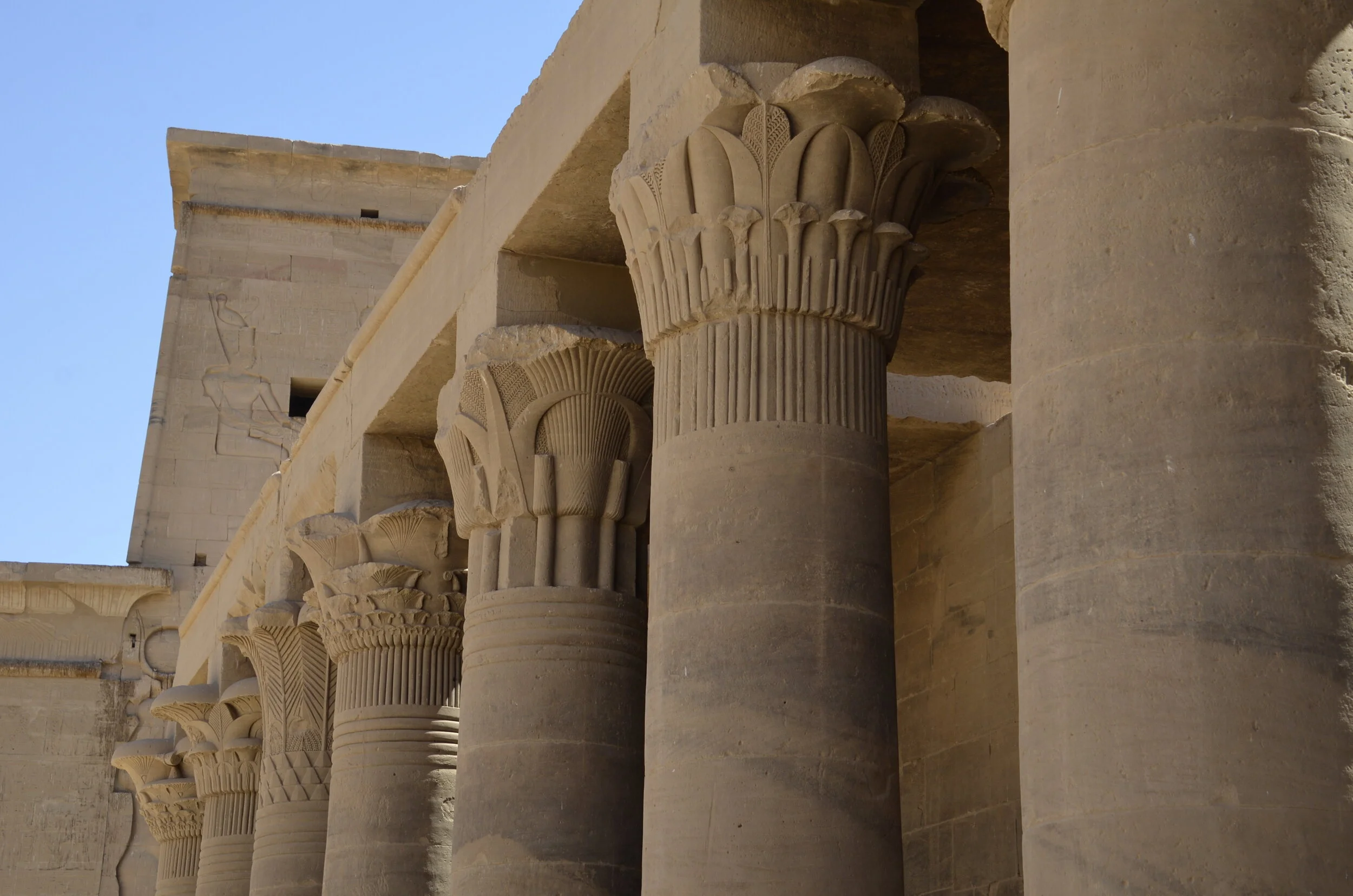More days on the Nile
I knew that our 6 day river cruise on the Nile went from Luxor to Aswan. Silly me to not look up a map before we left. We traveled south on the river, but in the topsy turvy world of the Nile, this is traveling UP river. We were on the Nile Queen, a sailboat that had no motor power. The few hours during our entire time on the river that there was enough wind to put up the sails, the boat looked pretty neat.
However, the reality was that for the large majority of our trip, we were TOWED upriver by a tugboat…
… not nearly so glamorous.
The lushness along the river at times was gorgeous -
One day’s excursions had us using a variety of transportation methods. First up was by tuk-tuk…
… and later by carriage -
The sites we were visiting paled in comparison to Luxor and the Valley of the Kings, but they were still interesting, and beautiful in their own way. The Temple of Horus:
… was completed in 57 BC. Horus is the falcon headed god -
The carvings on the huge pylons were amazingly deep and almost three dimensional -
The next day, we went to a quarry…
… where we could still see evidence of how they moved the huge blocks of stone (ropes through the holes to allow the blocks to slowly slide down to the river?)
The marks on the rock wall on the right in the picture above were made by those sharpening their knives and other cutting implements.
The next temple we saw at Kom Ombo was dedicated to both Horus (the falcon headed god) and Sobek (the crocodile god) -
… and with color still present (see the picture above) after 3,000 years of exposure to the sun and wind!
The museum associated with the temple had crocodile mummies -
On our last day or touring, we went to the quarry where the obelisks were carved out for Hatshepsut. This was intended to be placed in Karnak Temple, but it cracked.
We also drove over the dam at Aswan. I had heard of the “High Dam” at Aswan, but had no idea what it meant. Basically, the Nile was first dammed at Aswan in 1902 by the British, but the Nile continued to flood around it, soon after it was built. The newer “High” dam was started in 1960 with USSR financial support, and completed 10 years later. My picture is not much, but the story was neat.
That picture was taken from the “old” dam, looking upriver at the High Dam.
The Temple of Philae was on an island between the two dams. Before it was flooded, it was carefully moved, piece by piece to a new island.
In that picture above, you can easily see the two pylons that stood as the entrance to the temple (echoing the idea that was used for millennia).
I’ve always liked rows of columns…
… and I especially liked how the tops of each column were different -
Artsy picture with the sun, and showing the intricacy of the carving -
Before we leave the story of the boat, I wanted to show you how secure the handrail was for exiting…
On our last night, the river was so smooth, it offered some awesome reflections.
Next post covers the pyramids.

